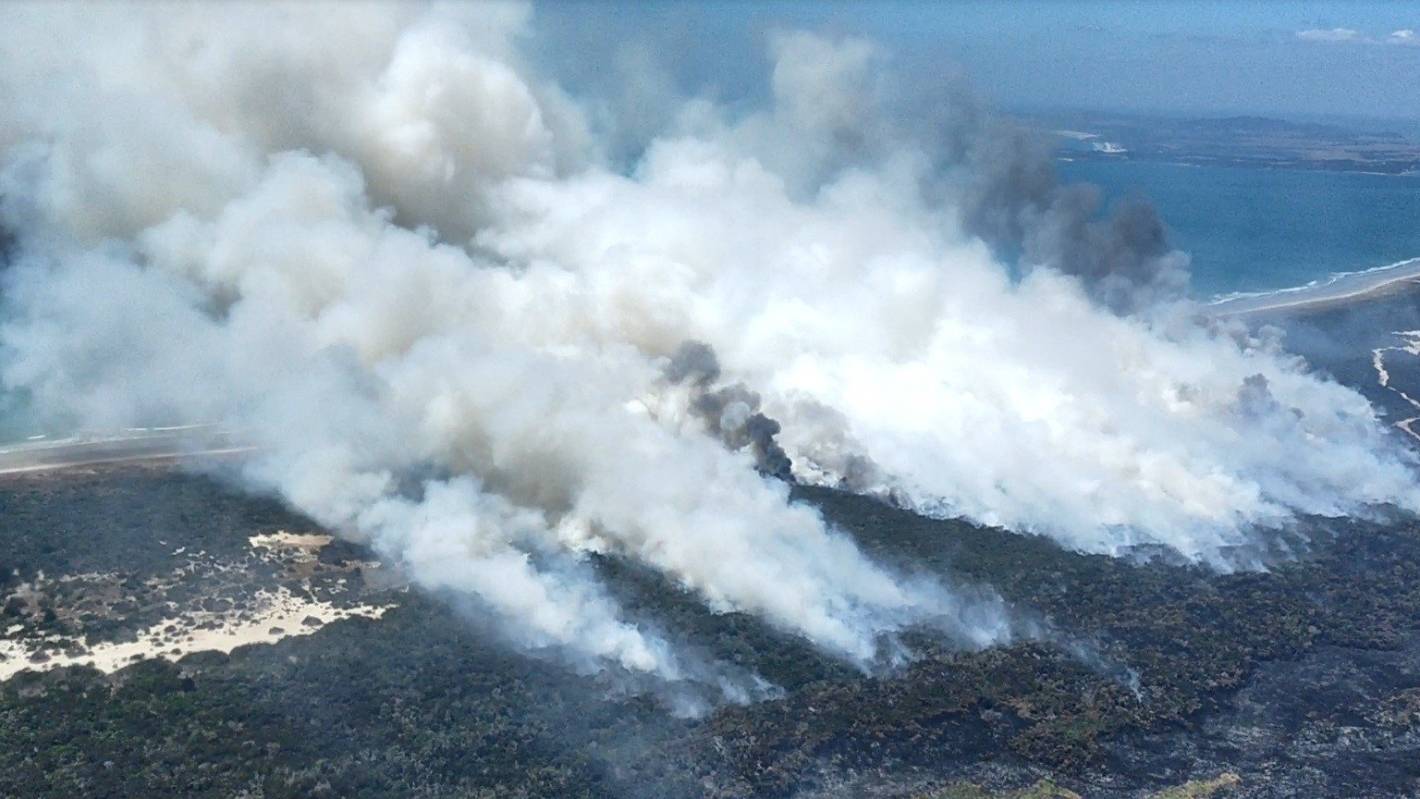Farmers clearing land of gorse and bamboo started a wildfire that tore through swathes of conservation land and burned for months, an investigation has found.
Since it ignited on December 18, 2021, the fire engulfed more than 2800 hectares at Waiharara in the Far North, including significant archaeological sites and a scientific reserve.
In a detailed report released on Monday, Fire and Emergency New Zealand investigators said the blaze was started when a fire, lit by a landowner to clear problem vegetation for an avocado farm, became “out of control”.
The landowner had a permit to light the fires.
READ MORE:
* Northland peat and scrub fire continues to burn, 10 months on
* More wetlands at risk of being ravaged by fire, thanks to climate change
* Far North firefighters still battling to contain Karikari blaze
“A number of factors contributed to the spread of this fire including heavy dry fuels, high temperatures and strong gusty winds,” Te Hiku region manager Ron Devlin said.
Fire and Emergency/Supplied
The Waiharara fire started on December 18, 2021.
“Fire and Emergency also investigated whether there were any grounds for prosecution, and we have determined that there is insufficient evidence to carry out any prosecution in relation to this fire.”
Earlier in the week in which the fire started, the land owner had lit piles of scrub and let it burn down, then covered it with dirt.
Some witnesses said they had seen smoke before midday, but thought it was part of the controlled burn.
By the time they realised it was out of control, it was too late to contain the fire.
DENISE PIPER/STUFF
The Department of Conservation’s Aroha Hughes explains how the Waiharara fire is impacting some of the rare species living in the Kaimaumau wetlands scientific reserve. (Video first published January 7.)
Previously, Department of Conservation national fire manager Aroha Hughes said it could take up to 15 years for flora and fauna to recover from the blaze.
The fire burnt through Kaimaumau wetlands – a scientific reserve which is home to endangered plants, fish, lizards and birds including a rare sun orchid, the black mudfish, the Northland green gecko and the Australasian bittern (matuku).
The land is managed by both DOC and local iwi Ngai Takoto and includes a number of wāhi tapu (sacred) sites.
Other signifiant New Zealand fires:
- The Lake Ōhua fire in October 2020 destroyed more than 5000ha of land and 46 houses. A crossarm failure on a power pole was found to be at fault.
- The Nelson Pigeon Valley fires, which started February 2019, burnt 2300ha and caused more than 1000 people to be evacuated. It took more than two months to control the blaze, caused by sparks from a disc plough.
- Christchurch’s Port Hills fires in 2017 were caused by two fires which merged, burning through 2000ha of bush and 11 houses, causing about $20 million in losses.
- The Boxing Day fires of 2000 in Blenheim’s Wither Hills burnt more than 6000ha, with a last-minute wind change saving the town.
- There were four fires that caused the February 1999 Alexandra fires, which also burnt more than 6000ha.
- New Zealand’s largest fire is believed to be the 1946 Taupō forest fire, where a discarded cigarette butt caused a 14,000ha blaze.




